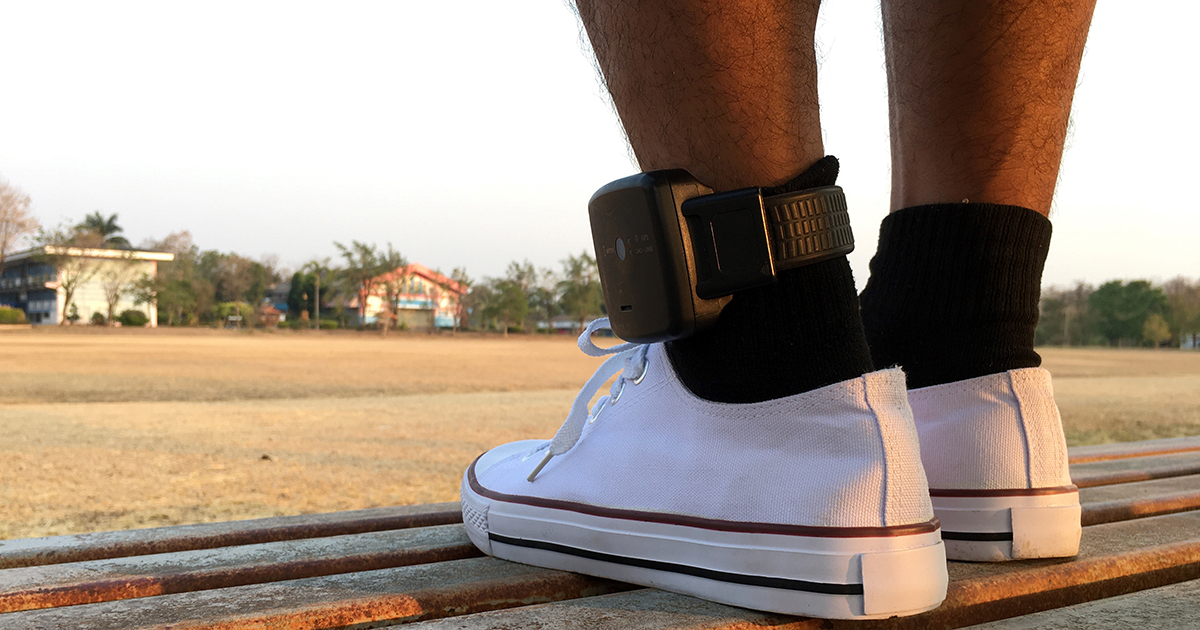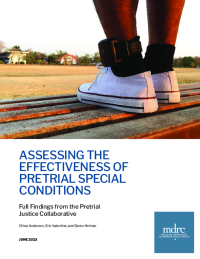Assessing the Effectiveness of Pretrial Special Conditions
Full Findings from the Pretrial Justice Collaborative

As more jurisdictions across the country are seeking to reduce their jail populations, many view electronic monitoring (EM, the use of an electronic device to monitor a person’s movement and location) and sobriety monitoring (regular drug and alcohol testing) as potential alternatives to pretrial detention. In theory, the added layer of supervision that these special conditions provide should encourage people to appear for court dates and avoid activities that could lead to new arrests. Yet most studies of the effectiveness of special conditions have faced methodological limitations and have yielded mixed findings. Furthermore, special conditions such as electronic monitoring and sobriety monitoring carry significant costs—both personal and monetary—for those being monitored and for jurisdictions.
This report contributes cross-jurisdiction evidence on the effects of these special conditions of release using retrospective data from cases initiated between January 2017 and June 2019 in four diverse jurisdictions across the United States: one small and rural, one medium-sized, and two large and urban jurisdictions. The MDRC research team employed a propensity score matching design to test the effectiveness of EM and sobriety monitoring in maintaining clients’ court appearance rates and helping them avoid arrest. This method allowed the team to compare court appearance and pretrial rearrest outcomes for individuals released with special conditions with those of statistically comparable individuals who were released without special conditions. The analysis uses a noninferiority approach, which tests whether release without special conditions is at least as effective as (that is, no worse than) release with a special condition.
The analysis found that:
- Being released on EM or sobriety monitoring did not significantly improve court appearance rates. The analyses found that the special conditions and non–special conditions groups had similar pretrial court appearance rates. These results were consistent across jurisdictions.
- Being released on electronic monitoring did not significantly increase the percentage of people who avoided a new arrest during the pretrial period. In fact, the analysis found that the EM group had a higher pretrial rearrest rate than the non-EM group, a result that was consistent across the two jurisdictions in that analysis. While the factors causing the results are not definitively known, the difference may be a supervision effect: people may be more likely to be arrested if their actions are more closely monitored, compared with others who are less closely monitored. Alternatively, the result may reflect unmeasured differences between the EM and non-EM groups that could not be controlled for in the analysis.
- Being released on sobriety monitoring did not significantly improve the percentage of people who avoided a new arrest, but there was variation in this effect among jurisdictions. In two of the four jurisdictions studied, people who were assigned to sobriety monitoring were more likely to avoid new arrests, while in the other two, the result was the opposite.
These findings warrant cautious reflection among policymakers and practitioners on the extent of current electronic and sobriety monitoring use, particularly considering their high personal and financial costs to those directly affected and to jurisdictions. The exploratory findings also highlight a need for additional cross-site studies—in particular, those that employ more rigorous experimental methods—on the effectiveness of special conditions at the pretrial stage. Given the site variation in findings, particularly for sobriety monitoring, more research is also needed to delineate the populations that would benefit from special conditions from those who would not benefit and to illuminate the policies and practices that are associated with the greatest success.






